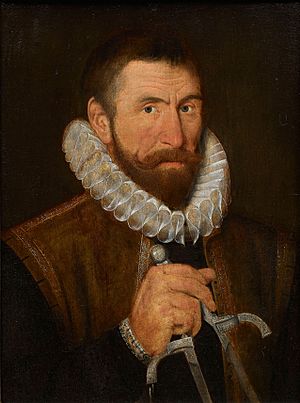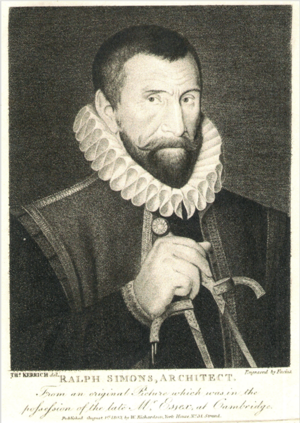Ralph Symons facts for kids
Ralph Symons was a skilled English builder and architect. He was active from about 1583 to 1605. Symons is famous for his important work at the University of Cambridge. He built many parts of the university during the time of Queen Elizabeth I. His name was sometimes spelled differently, like Symonds or Simons.
Contents
Ralph Symons' Building Projects
Ralph Symons helped design and build many famous parts of Cambridge University. He was known for creating beautiful and strong buildings.
Early Work at Cambridge
- In 1584, Symons designed the first part of Emmanuel College, Cambridge. He worked on this for Sir Walter Mildmay.
- By 1593, he was in charge of building the Great Court at Trinity College. This court is one of the most famous college areas in Britain.
- From 1596 to 1598, Symons also worked on the new Sidney Sussex College.
Building St John's College
From 1598 to 1602, Symons worked with Gilbert Wigge. They built the Second Court of St John's College. This new court was built on top of older foundations. Their original drawings for this project still exist. These are the oldest plans for a Cambridge college building. During this time, Symons lost his left hand.
Later Projects
- Symons created designs for buildings at King's College in 1602 and 1603.
- In 1604, he returned to Trinity College. There, he worked on the hall and kitchen areas.
His Portrait
A portrait of Ralph Symons is now in the National Portrait Gallery, London. It was painted by an unknown artist. This painting is the earliest known portrait of a craftsman in England.
The Lost and Found Painting
This painting of Symons was once at Sidney Sussex College. It was listed in their records from 1639 to 1748. Then, it disappeared. For a long time, people only knew about it from copies. One copy was at Emmanuel College. Another was a drawing by Thomas Kerrich. There was also an 1803 print made from Kerrich's drawing.
In 2016, art dealers found the "lost" painting in Italy. The portrait shows Symons wearing a leather jacket. He is holding architect's compasses. The painting was offered to the National Portrait Gallery. They bought it for their Tudor galleries. The gallery believes the portrait was painted around 1595. It went on display on July 11, 2016.



